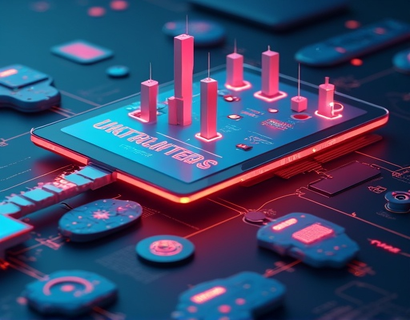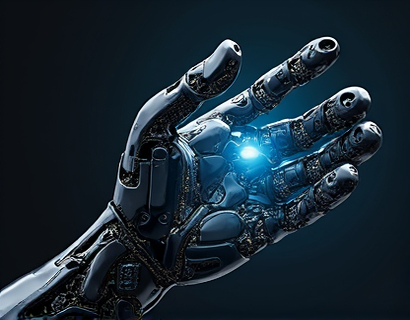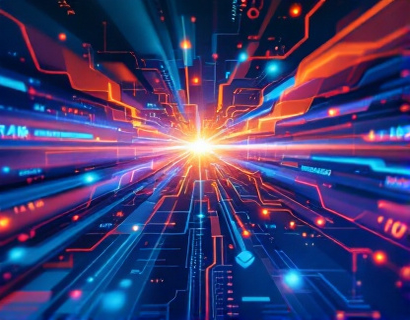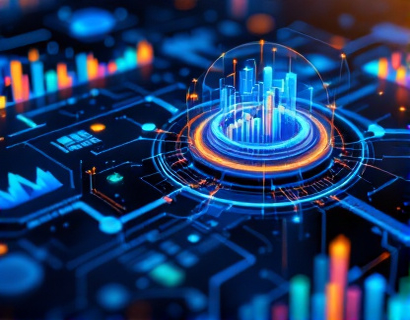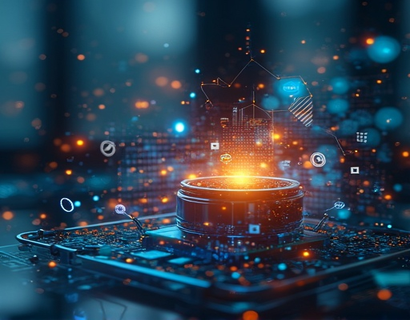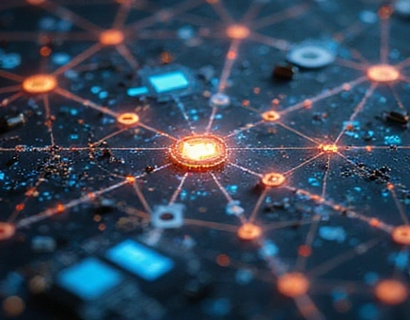Unlocking Enhanced Digital Transformation: The Synergy of AI and Crypto
The intersection of artificial intelligence (AI) and cryptocurrency is paving the way for a new era of digital transformation. This synergy is not just a technological curiosity but a powerful force that can revolutionize how businesses and individuals interact online. For tech pioneers and early adopters, understanding and leveraging this integration can unlock unprecedented levels of security, efficiency, and innovation. This article delves into the advanced integration solutions that combine AI and cryptocurrency, offering a comprehensive guide to elevating your digital presence and maximizing your potential in the rapidly evolving digital landscape.
Understanding the Basics: AI and Cryptocurrency
To fully appreciate the potential of AI and cryptocurrency, it's essential to start with the basics. Artificial intelligence refers to the simulation of human intelligence processes by machines, particularly computer systems. These processes include learning (the acquisition of information and rules for using it), reasoning (using rules to reach approximate or definite conclusions), and self-correction. On the other hand, cryptocurrency is a digital or virtual currency that uses cryptography for security and is typically decentralized, meaning it operates on a peer-to-peer network rather than being controlled by a central authority.
Cryptocurrencies like Bitcoin and Ethereum have gained widespread recognition, but their underlying technology, blockchain, is where the real innovation happens. Blockchain is a distributed ledger that records transactions across multiple computers in such a way that the registered transactions cannot be altered retroactively. This technology ensures transparency, security, and immutability, making it an ideal foundation for various applications beyond just currency.
AI in Cryptocurrency: Enhancing Security and Efficiency
One of the most significant impacts of AI on cryptocurrency is in the realm of security. Traditional security measures often struggle to keep up with the sophistication of cyber threats. AI, however, can analyze vast amounts of data in real-time to detect and respond to anomalies and potential threats. Machine learning algorithms can identify patterns that indicate fraudulent activity, such as unusual transaction volumes or access attempts from unfamiliar locations. By integrating AI into cryptocurrency platforms, users can enjoy a higher level of security, reducing the risk of hacks and unauthorized access.
Efficiency is another area where AI shines in the cryptocurrency space. Smart contracts, self-executing contracts with the terms directly written into code, can automate and enforce contractual obligations without the need for intermediaries. AI can optimize the execution of these smart contracts, ensuring they run smoothly and efficiently. Additionally, AI-driven trading bots can analyze market data and execute trades at optimal times, maximizing returns and minimizing risks for investors.
AI-Powered Crypto Assets: Tokenization and Beyond
The tokenization of assets is a transformative concept made possible by the combination of AI and cryptocurrency. Tokenization involves representing real-world assets, such as real estate, art, or even intellectual property, as digital tokens on a blockchain. AI can enhance this process by providing sophisticated valuation models, risk assessments, and market analysis. For instance, AI algorithms can predict the future value of tokenized assets based on historical data, market trends, and other relevant factors, helping investors make more informed decisions.
Beyond tokenization, AI can create new types of crypto assets with unique functionalities. For example, AI-generated art, known as AI art, can be tokenized and sold as unique digital collectibles. These assets not only hold value but also come with the added benefit of provenance and authenticity, verified through blockchain technology. AI can also be used to create decentralized autonomous organizations (DAOs), which are community-driven entities governed by smart contracts and AI algorithms, enabling more democratic and efficient management of resources.
Enhancing User Experience through AI and Crypto
The integration of AI and cryptocurrency can significantly enhance the user experience for tech pioneers and early adopters. One of the key benefits is personalized experiences. AI can analyze user behavior and preferences to tailor content, recommendations, and services. In the context of cryptocurrency, this means more intuitive and user-friendly wallets, exchanges, and other financial tools. For example, AI-powered wallets can learn a user's spending habits and suggest optimal times for transactions to avoid high fees or security risks.
Another area where AI and crypto converge to improve user experience is in customer support. Chatbots powered by natural language processing (NLP) can provide instant and accurate assistance to users, handling queries and issues in real-time. This not only enhances user satisfaction but also reduces the workload on human support teams. Additionally, AI can facilitate seamless cross-platform interactions, allowing users to manage their crypto assets and interact with various services using a single, unified interface.
Decentralized Finance (DeFi) and AI: A Powerful Combination
Decentralized Finance (DeFi) is a rapidly growing sector that leverages blockchain technology to create financial services without traditional intermediaries. AI plays a crucial role in enhancing the capabilities of DeFi platforms. For instance, AI-driven risk management systems can assess and mitigate risks in real-time, ensuring the stability and reliability of DeFi protocols. These systems can analyze market conditions, user behavior, and other factors to dynamically adjust parameters such as interest rates and loan limits.
AI can also optimize yield farming, a strategy in DeFi where users lend or stake their crypto assets to earn rewards. AI algorithms can identify the most profitable farming opportunities, automate the process of reallocating assets, and minimize losses. This level of automation and optimization is particularly valuable for tech-savvy users who are always looking for ways to maximize their returns.
Building Trust and Transparency with AI and Crypto
Trust is a fundamental component of any financial system, and the combination of AI and cryptocurrency can significantly enhance transparency and trust. Blockchain's inherent transparency, combined with AI's ability to analyze and verify data, creates a robust framework for building trust. For example, AI can be used to monitor and audit blockchain transactions, ensuring compliance with regulations and standards. This not only reassures users but also helps in maintaining the integrity of the ecosystem.
Moreover, AI can facilitate the creation of decentralized identity systems, where users have full control over their personal data. These systems use blockchain to store and manage identity information, with AI ensuring that only authorized parties can access specific data. This level of control and security can greatly enhance user trust in digital platforms and services.
Challenges and Considerations
While the integration of AI and cryptocurrency offers numerous benefits, it also comes with challenges that tech pioneers and early adopters must be aware of. One of the primary concerns is regulatory compliance. The crypto space is still largely unregulated, and the use of AI adds another layer of complexity. It's crucial to stay informed about the evolving legal landscape and ensure that all activities comply with relevant laws and regulations.
Another challenge is the technical complexity of integrating AI and blockchain technologies. Developing robust and secure systems requires expertise in both domains. For individuals and businesses venturing into this space, investing in education and partnering with experienced developers can be invaluable. Additionally, the computational resources required for AI and blockchain can be substantial, necessitating efficient infrastructure and energy management strategies.
Future Prospects: The Next Generation of Digital Interactions
The future of digital transformation is bright, with AI and cryptocurrency set to play pivotal roles. As these technologies continue to mature, we can expect even more innovative applications and integrations. For instance, the development of AI-powered virtual assistants that can manage crypto portfolios, automate trades, and provide real-time market insights will become more common. These assistants can learn from user preferences and adapt to changing market conditions, providing a truly personalized experience.
Furthermore, the convergence of AI and cryptocurrency can drive the adoption of Web3, a decentralized internet where users have greater control over their data and online interactions. Web3 platforms powered by AI and blockchain can offer more secure, private, and user-centric services, fundamentally changing the way we interact online. For tech pioneers and early adopters, embracing these advancements can position them at the forefront of the next digital revolution.
In conclusion, the synergy of AI and cryptocurrency is not just a technological trend but a transformative force that can redefine digital experiences. By leveraging the strengths of both technologies, tech pioneers and early adopters can unlock new levels of security, efficiency, and innovation. As the digital landscape continues to evolve, staying informed and proactive in adopting these advanced integration solutions will be key to staying ahead.





